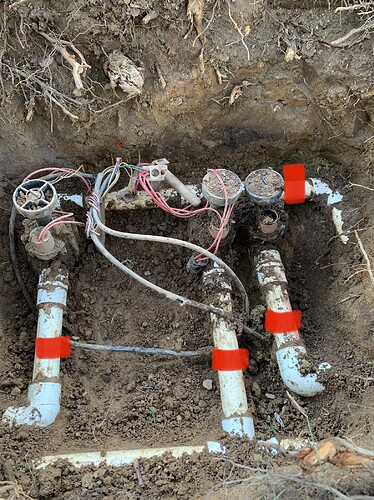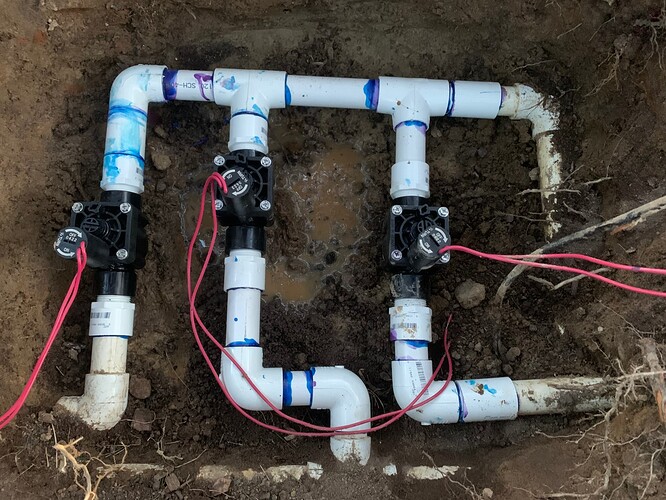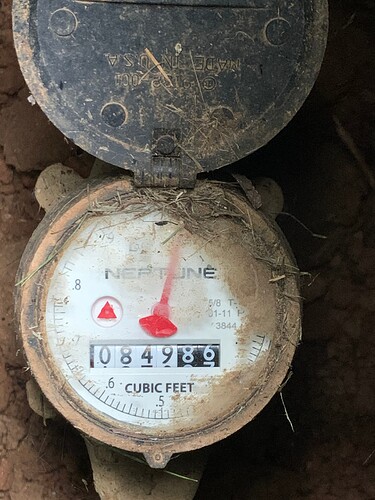Wow! Thanks I will get on the search now. That would make sense as my heads are all Toro too.
Unscrew the valve and take a look inside. I’ll bet you find dirt, rocks or sticks. Or all 3. I just had a repair done on the main line that feeds my back yard and after it was complete, my zones wouldn’t turn off. Opened the valves up and they were filled with junk. Once I cleaned them out with a wet/dry shop vac, the zone would stay on without any pressure issues. You’ll probably then want to flush all your heads/nozzles/filters as well since the crap probably made it’s way to the end.
If you open it up, be sure not to let any other dirt fall inside.
It’s actually the solenoid that broke off. It looks like the piece the solenoid connects to is damaged as well.
Best bet is to buy a complete valve then, but you don’t need to replace the whole thing. Just take the guts, top and solenoid and replace it all on the existing installed body. Do everything you can to avoid digging up a valve! 
Lol, it’s okay for this time. I will eventually replace all the doubles and do them correctly. I’d rather do it now while I am able rather than pay someone when I’m unable.
So I got around to digging it up today and lo and behold I found the last valve right next door to it. I’m going to just switch all three to hunter valves and put in a new large valve box. This is right next to a tree too so there is a ton of roots. I’ll add landscape fabric and pea gravel under it too.
Red marks are where I think I’ll cut and re plumb
I would suggest looking at sprinkler valve manifolds. It might be a little more work to begin with but really pays off if you need to do certain work later.
Interesting, why is that better than just building your own manifold? I had planned to build one anyways but didn’t realize that was a thing that is sold that way. I just thought to myself that would be easier to pre-build a lot of it and then plumb that in.
Valves in the pre-built manifolds are not glued in, but rather threaded. If you need to replace a valve, you do not need to cut pipe or use glue. Maybe you can get the parts to make one, I just have not seen one handmade that ends up being cheaper or better. Most sprinkler and big box stores seem to have them. Searching sprinkler valve manifold will find.
Thanks this all new to me so I appreciate the information.
The Hunter valves I bought are threaded and I just got all the couplings and elbows this morning. No manifolds at my Home Depot but they only have Orbit and Rainbird.
Here is an example of a pre-build manifold, in case you did not see them (you can get the manifold without valves): Orbit 3-Valve Inline Manifold Assembly 57253 - The Home Depot. I believe most valves have standard threads. A video is on that page that shows how they work if you needed to work on the valve while in the ground. Anyway, up to you.
I got mine from a sprinkler supply place, all Action Machine brand, Triple Manifold, 1" cap, with a couple types of adapters.
Well the hard work was completed yesterday. I’ve replaced my back flow preventer plumbing and plenty of heads but this is my first valve repair and it was a doozy.
I was cursing it plenty and wondering why I chose to do it. I forgot that pipes are not flexible and getting those last connections in is a chore. I will be keeping an eye on it as I wasn’t able to do the 1/4 turn in to places when applying the cement for the last connections. I was worried this morning when I turned it on that it would be all for nothing but no leaks.
I also learned to not use a PVC ratchet cutter on live/active/under ground PVC. It is best to use a hacksaw or around the pipe cutter.
So small leak but no idea where. No visible leaks and it’s so slow. I’m wondering if it was there in the system before and I didn’t know. Images are 90 minutes apart. I have not run the sprinklers yet either, just water on.
That is a small leak. I think that would equate to make 1.25 tablespoons. Over a month, that would be less than 2.5 gallons. I am not sure I would be all that concerned, but then again, I believe I just found a “leak” yesterday that was much worse than that. My water feature has an autofill and it worked loose that it was not shutting off completely. I was wondering how to find that and happened to notice the pump was not working. That is when I noticed the water level, etc. Previously, I either noticed water coming up from the ground (large leak) or the valve box never dried out (small leak by the valve).
@Random - close down the backflow preventer to see if the leak is in the irrigation system or somewhere else. That is assuming that this meter isn’t dedicated to just the irrigation system.
Yeah the meter is just for the irrigation.
Thanks @Thomas_Lerman, that is very small indeed. I’m still bothered by it. I know the leak dial didn’t move at the beginning of summer so I am guessing it’s related to something I did. Hopefully I can find it on the next dry day. I was not feeling any water and there is no noticeable drips either.
It’s raining now so I’ll have to wait until everything dries up to troubleshoot more. Until then the hole stays open.
You are on the right path, see what it is like after the rain stops and everything dries up. Good work.
I was thinking I was toying around with other valves in the yard to understand how they worked. I may have knocked something loose there too. I think I mentioned earlier they are all 15+ years old so at some point they will fail too.
I have a Moen Flo for my house. What products are available that are similar that can be outside for irrigation. I can go do the reading and join the other conversations but I’m looking for help on key words to search on. Thanks
I don’t have one but have read about the Flume product that attaches to the water meter:




